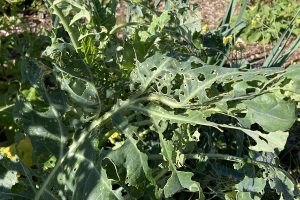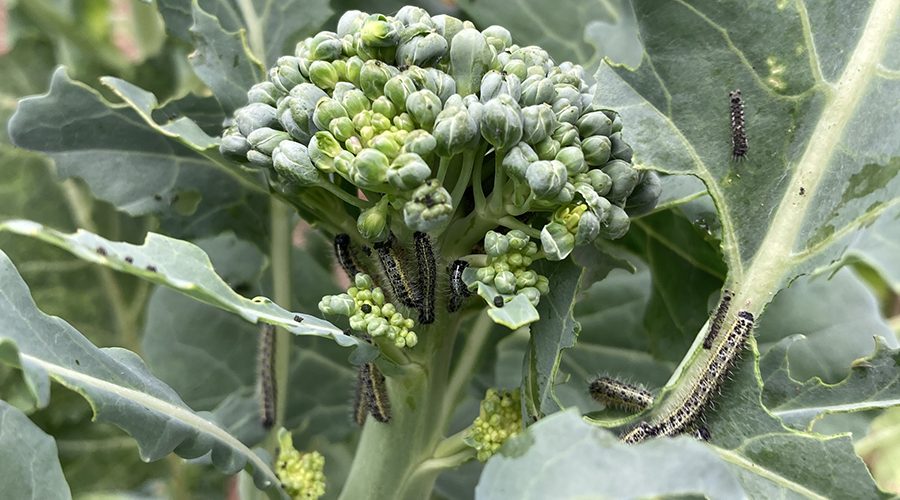We say so often to check your brassicas for eggs to prevent a caterpillar disaster, but what about after your plants are covered in the little guys? Is it game over, or can that broccoli be saved?!
First off, have a look at what damage has been done. If it’s just a few of the older, outer leaves that have been eaten, then it’s really no biggie. You can just pull those leaves off, with the caterpillars, and put them in the compost pile, or in amongst some sacrificial nasturtiums. Simple. Check the rest of the plant for eggs and wipe off any that you see, then make sure you cover it with mesh net to keep it protected from future egg-laying.
I f the damage is more extensive, you might want to handpick off all the caterpillars that you can find. Assuming you can’t bear to kill them, the best thing is to put them in a patch of sacrificial nasturtiums, or relocate them to your worst affected brassica plant so that they can all feed off one or two plants rather than the whole patch. We can’t guarantee they won’t move on to other plants though once they’ve eaten everything! We have, in the past, found that plants like kale and sprouts have made a pretty full recovery even after being eaten down to the veins though, so definitely don’t give up on them. Just do what you can to remove the caterpillars, pop a net over them, and give them a few weeks to recover.
f the damage is more extensive, you might want to handpick off all the caterpillars that you can find. Assuming you can’t bear to kill them, the best thing is to put them in a patch of sacrificial nasturtiums, or relocate them to your worst affected brassica plant so that they can all feed off one or two plants rather than the whole patch. We can’t guarantee they won’t move on to other plants though once they’ve eaten everything! We have, in the past, found that plants like kale and sprouts have made a pretty full recovery even after being eaten down to the veins though, so definitely don’t give up on them. Just do what you can to remove the caterpillars, pop a net over them, and give them a few weeks to recover.
For plants like the broccoli pictured, where the veg is actually at harvestable stage and you want to eat it, we’d suggest that you pick off as many caterpillars as you can, and then soak what you want to eat in a bowl of warm water with a couple of tablespoons of white vinegar added. Any caterpillars that are hidden will float to the top after a few minutes, and then you can drain them off, rinse the vegetables and cook as normal. It’s a good hack that means you can enjoy your veg without the fear of munching through a caterpillar.

